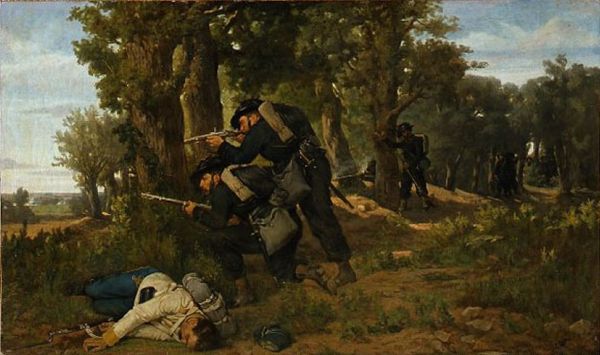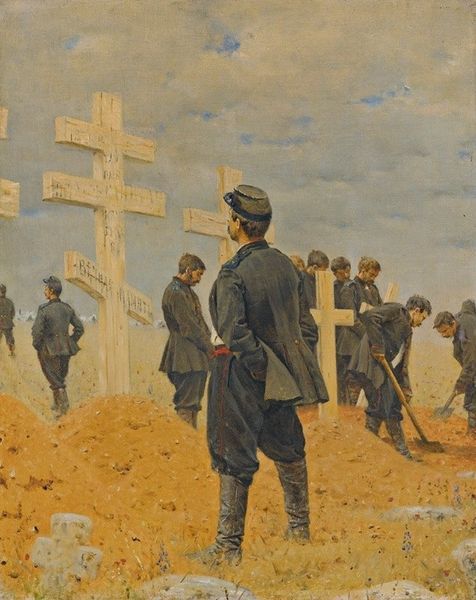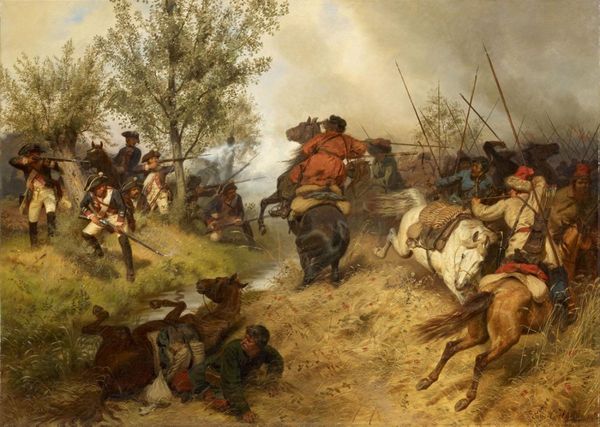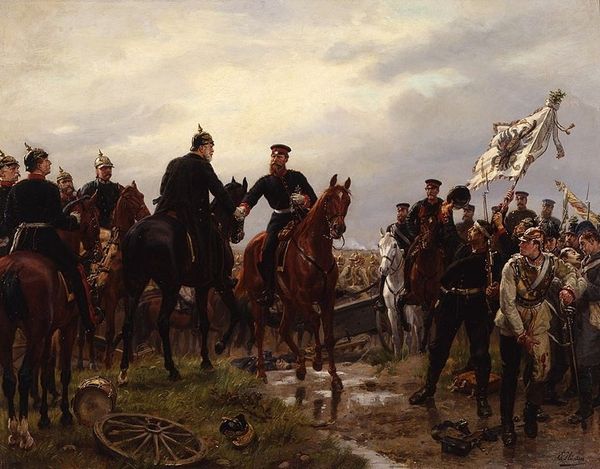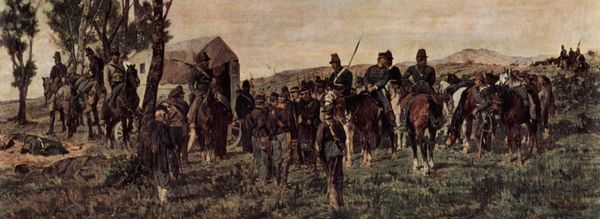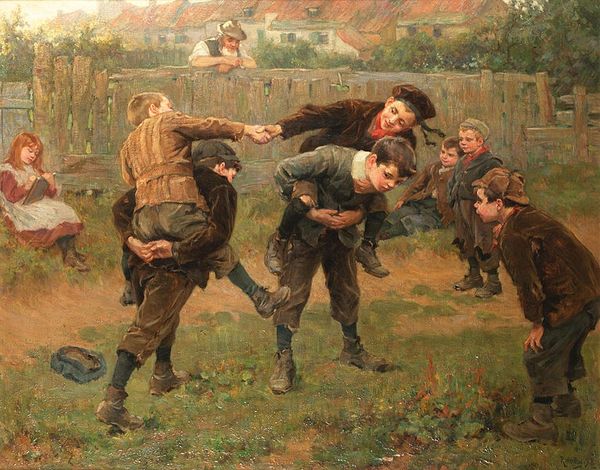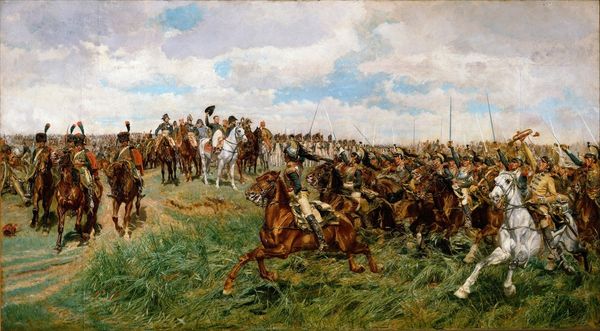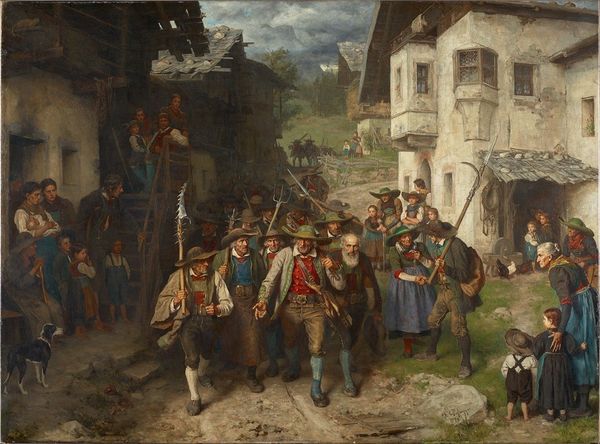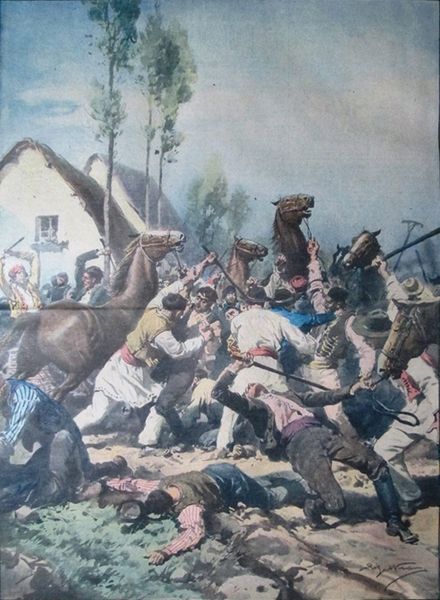
Copyright: Public domain
Curator: I'm struck by the cool palette. There's almost a detachment, despite the intense scene of battle unfolding. A little like history seen through fogged glass. Editor: Indeed. We’re looking at Emil Hünten's 1871 oil painting, "Kronprinz Friedrich Wilhelm Von PreuBen Während Der Schlacht Von Sedan," depicting Crown Prince Frederick William of Prussia during the Battle of Sedan. Curator: Sedan… That decisive Prussian victory. Yet, the eye is drawn immediately to the brutal vignette in the lower-left corner, the green-clad soldier stepping casually over a fallen comrade. A chilling bit of stagecraft there. Makes me wonder what other calculated narratives are woven in. Editor: Definitely, and it speaks volumes about the artifice of war paintings and their intended viewers. Hünten clearly knew his audience. Academic painting demands a certain…polish. Note the almost theatrical lighting; how it elevates the Prince on the mound while throwing the immediate carnage into shadow. Curator: Precisely! That shadow conveniently obscures the actual horror, framing the Prince – seemingly detached – in a heroic light. You know, it almost feels… staged. I mean, the battle in the background seems almost an afterthought, a muted backdrop to this very deliberate performance. Editor: Consider the materials too; finely milled pigments creating these subtle gradients of colour, smooth canvas lending a refined texture... all contributing to the image’s overall aspirational quality, designed for the consumption of the Prussian elite. And look at the sheer labour, not just in executing the piece but also, in extracting, preparing, and distributing the paints, brushes, canvases across the network required for this very spectacle to be painted at all. Curator: You are right. Everything is so impeccably rendered, lending a certain coldness to the entire endeavor. What is Romanticism, but academic art put into the service of propaganda? I feel oddly unmoved looking at this work of war, though perhaps the chill is, itself, the point? Editor: The chill and detachment. Perhaps it's a useful lens through which to regard history. Makes you aware of the mechanics and power dynamics behind any depiction, not just on a canvas, but anywhere it finds place within history. Curator: Agreed. I'm left wondering what that fallen soldier at the bottom would say. Probably nothing recorded… The spoils of even viewing such an artistic effort often favour those atop.
Comments
No comments
Be the first to comment and join the conversation on the ultimate creative platform.


